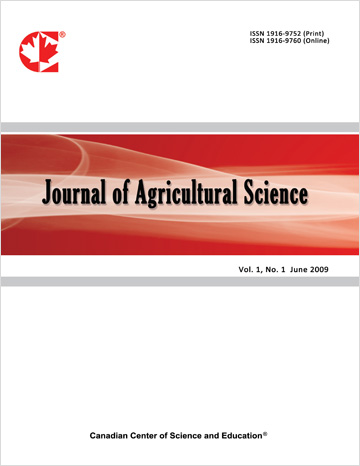Effect of Male Planting Date and Female Plant Population on Hybrid Maize Yield and Evaluation of Use of Hybrid-Maize Simulation Model for Grain Yield Estimation in Hybrid Maize Seed Production
- Lennin Musundire
- Shorai Dari
- John MacRoberts
- H. S. Yang
- John Derera
- Pangirayi Tongoona
Abstract
The study was carried out to determine the effect of male planting date (MPD) and female plant population (FPP) on the grain yield (GY) performance of a three-way hybrid and to evaluate Hybrid-Maize simulation model for grain yield estimation in hybrid seed maize production. Fifteen treatment combinations of five MPD as a deviation from the female planting date and three FPP replicated three times were used. The Hybrid-Maize simulation model programme was used to forecast the possible GY outcomes for the fifteen treatments of the experiment using estimated parameters and weather data for the 2006/7 season. The field experiment produced significant (P < 0.005) main effects but non-significant interaction effects for GY, yield components and antheis-silking interval (ASI). Female seed yield was affected by time of male pollen shed relative to female silking: ASI, with highest yields associated with close synchrony (ASI= +/-3 days). ASI had a significant effect on the number of kernels per ear (KPE), with the greatest KPE (318) associated with an ASI of +/-3 days. FPP effects on yield are typical for maize, showing a curvilinear response from low to high density. The optimum population density for GY was 5.4 plants m-2. Simulation output from the Hybrid-Maize simulation model showed an overestimation of GY compare to the observed yield. Furthermore, the model was unable to predict yields for the low FPP of 2.7 plants m-2. We found that Hybrid-Maize simulation model has limited potential for simulating hybrid maize seed production, as it does not accommodate limitations that may occur during the growing season: difference in male and female planting dates, pollen density and dispersion. Hence, the fixed parameters for the Hybrid-Maize simulation model can only be used in maize commercial production.
- Full Text:
 PDF
PDF
- DOI:10.5539/jas.v10n3p333
Journal Metrics
- h-index: 67
- i10-index: 839
- WJCI (2023): 0.884
- WJCI Impact Factor (2023): 0.196
Index
- AGRICOLA
- AGRIS
- BASE (Bielefeld Academic Search Engine)
- Berkeley Library
- CAB Abstracts
- ChronosHub
- CiteSeerx
- CNKI Scholar
- Copyright Clearance Center
- CrossRef
- DESY Publication Database
- DTU Library
- e-Library
- EBSCOhost
- EconPapers
- Elektronische Zeitschriftenbibliothek (EZB)
- EuroPub Database
- Excellence in Research for Australia (ERA)
- Google Scholar
- Harvard Library
- IDEAS
- iDiscover
- Jisc Library Hub Discover
- JournalTOCs
- KindCongress
- LIVIVO (ZB MED)
- LOCKSS
- Max Planck Institutes
- Mendeley
- MIAR
- Mir@bel
- NLM Catalog PubMed
- Norwegian Centre for Research Data (NSD)
- Open J-Gate
- OUCI
- PKP Open Archives Harvester
- Polska Bibliografia Naukowa
- Qualis/CAPES
- RefSeek
- RePEc
- ROAD
- ScienceOpen
- Scilit
- SCiNiTO
- Semantic Scholar
- SHERPA/RoMEO
- Southwest-German Union Catalogue
- Standard Periodical Directory
- Stanford Libraries
- SUDOC
- Swisscovery
- Technische Informationsbibliothek (TIB)
- Trove
- UCR Library
- Ulrich's
- UniCat
- Universe Digital Library
- WorldCat
- WRLC Catalog
- Zeitschriften Daten Bank (ZDB)
Contact
- Anne BrownEditorial Assistant
- jas@ccsenet.org
